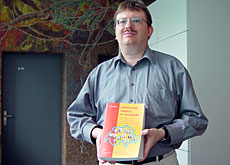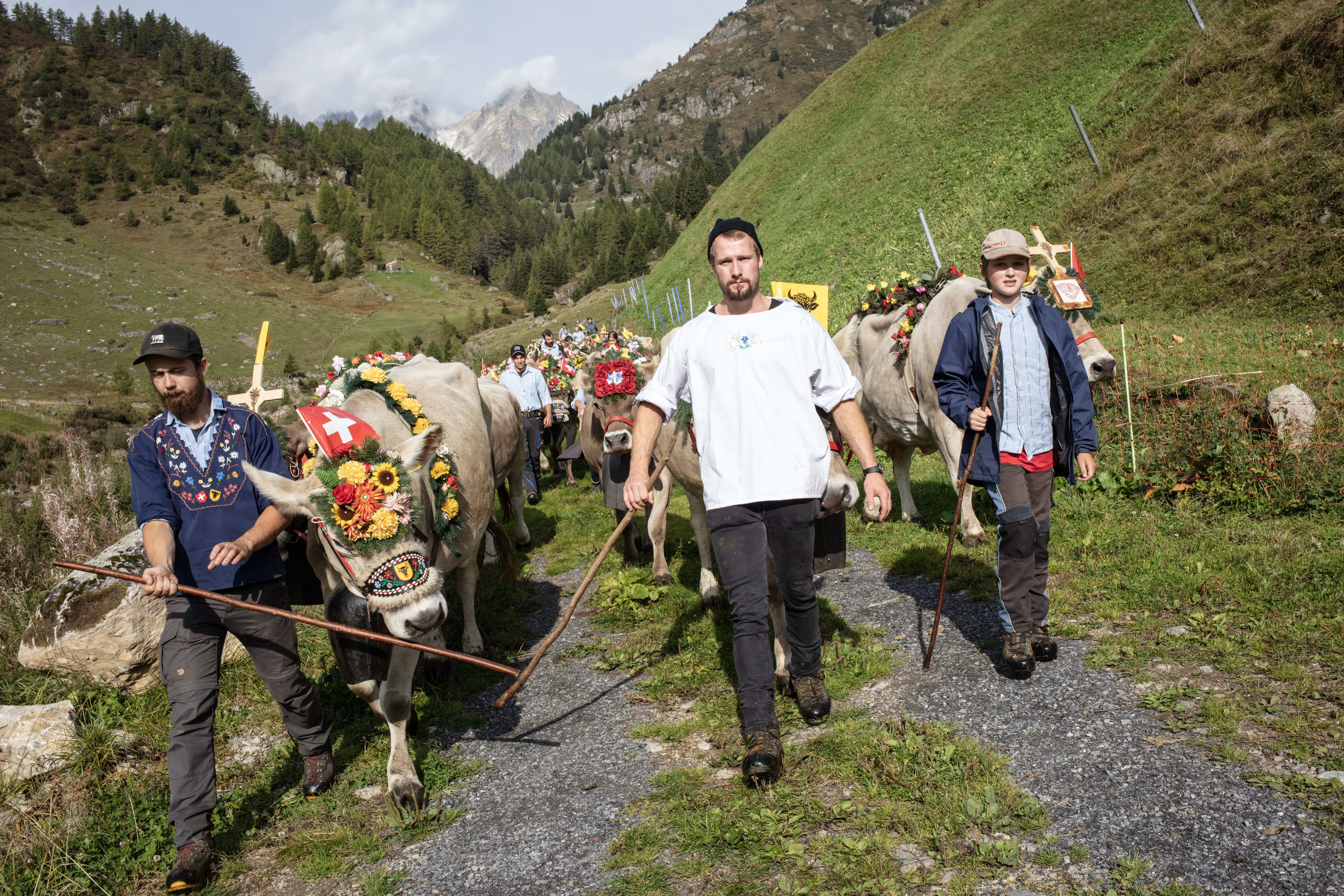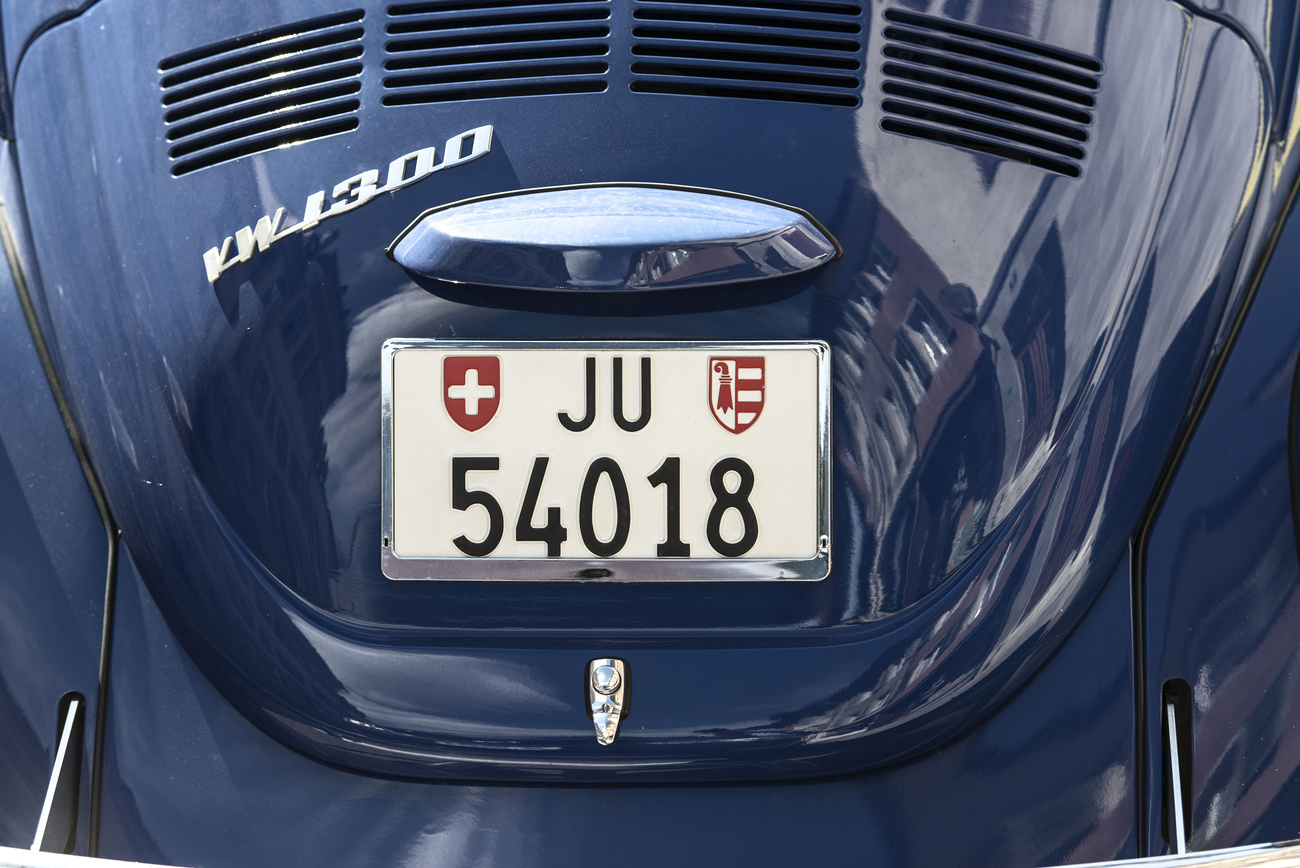
Overcoming the language barrier

A book recently published in Switzerland will be of interest to readers worldwide – and they won't have to wait for it to be translated.
Author Andreas Künzli is a speaker of Esperanto, the world’s best-known artificial language. His book, Universalaj lingvoj en Svislando, is a dictionary of the development of artificial languages in Switzerland and, naturally enough, is written in Esperanto.
It contains portraits of hundreds of people who were, and are, involved in promoting the language in Switzerland. Among them are the ant researcher Auguste Forel, and Hector Hodler – son of the painter, Ferdinand Hodler – who were both Esperanto enthusiasts.
Prominent Swiss who were interested in Esperanto, even if they did not learn it themselves, also have their entries. They include Emil Frey, a cabinet minister from 1890 to 1897 and veteran of the American Civil War, as well as the influential linguist Ferdinand de Saussure (1857-1913).
Another well-known Swiss, the chocolate maker Theodor Tobler of Toblerone fame promoted another artificial language, Ido. He used it in some of his advertisements, which are illustrated in the book.
The text is a mine of information, not only about Esperanto but a number of other artificial languages as well. It is enhanced with numerous reproductions of posters, stamps and historical photos.
Dream
The book took Künzli 14 years to write, but it was the fulfilment of a dream. He himself started learning Esperanto in 1979, when out of curiosity he attended the 64th Esperanto Congress in Lucerne.
“About 2,000 people from 60 countries come together at a congress,” he told swissinfo. “People speak only Esperanto, and there is no language problem. It’s a good feeling.”
According to Künzli, the language also opens up a world of literature. It is not only the classics which have been translated.
“I’ve read books by Catalan and Icelandic authors in Esperanto, because there were no German translations,” he said.
Künzli’s own book, over 1,000 pages long, includes introductory texts in Switzerland’s four languages and English. For non-Esperanto speakers who are not daunted by its length, there is an overview of its very simple grammar, and a word list, to enable them to tackle the body of the text.
“One advantage of Esperanto is that it is easy to read with the help of a dictionary, even for people who have not learnt the language,” the book claims.
Survived
Esperanto was developed by Lejzer Ludwik Zamenhof, a Polish Jew, who published his first work in the language in 1887. Although it now has speakers all over the world, it shows no signs of being adopted as a universal language.
It has a strong web presence today, but in other areas its use has declined.
Swiss Radio International had an Esperanto service for nearly 50 years, but stopped the broadcasts in 1992, on the grounds that the end of the iron curtain meant it was no longer needed.
“It lacks a lobby at the political and economic level,” said Künzli. “Esperanto has probably missed its chance of being introduced as a neutral language. The League of Nations looked at the question back in the 1920s. It was mainly the French government which voted against, so it was dropped.”
Other experts have a different explanation. Linguist Enrique Ros of Bern University’s Teacher Education, says that people don’t use it because they can’t identify with it.
“But the fact that Esperanto is already 120 years old and still survives shows that there are still people who believe in it,” he said.
swissinfo, based on a German article by Gaby Ochsenbein
Universalaj Lingvoj en Svislando
Author: Andreas Künzli
Publisher: Svisa Esperanto-Societo and Centre de documentation et d’étude sur la langue internazionale, Bibliothèque de la Ville de La Chaux-de-Fonds
2006. ISBN 2-9700425-2-5
Esperanto was the brainchild of Polish Jewish ophthalmologist Lejzer Ludwik Zamenhof, who published his first brochure in the language in 1887. He wanted it to become a second language for all.
The Swiss Esperanto Society was founded in 1903.
The Universala Esperanto-Asocio, or Universal Esperanto Association, was founded in Geneva in 1908. It is now based in Rotterdam and has members in 113 countries.
There are thought to be hundreds of thousands of people with some knowledge of the language in the world, and around 1,000 who have it as their first language.
There are concentrations of speakers in China, Japan, Brazil, Iran, Madagascar, Bulgaria and Cuba.
Esperanto has a simple grammar with no exceptions to its rules. Its vocabulary is largely based on Latin roots.
Other artificial languages include Volapük, Ido, Occidental-Interlingue and Interlingua.

In compliance with the JTI standards
More: SWI swissinfo.ch certified by the Journalism Trust Initiative































You can find an overview of ongoing debates with our journalists here . Please join us!
If you want to start a conversation about a topic raised in this article or want to report factual errors, email us at english@swissinfo.ch.